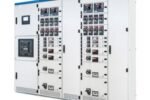
The data explosion that continues to grow at exponential rate and is expected to hit the 35 Zettabytes of digital data by 2020 is now a worrying factor for most of the enterprises across the globe and they are looking to migrate to virtualised environments to reduce costs, improve quality-of-service (QoS) and make more efficient use of resources.
As per an survey conducted by Gartner, identified that nearly half of respondents rank data growth as one of their top three challenges, along with performance and scalability. While all the top data centre challenges impact cost to some degree, data growth is linked to the increased costs relative to hardware and software maintenance, as well as administration and services.
Some organisations have resorted to simple tactics to keep up with demand – such as adding more servers – which just adds to the problem. Many businesses, however, have realised that the traditional data centre model, while effective, is not sustainable and does not scale with growth.
Through virtualisation, companies can massively reduce their physical assets and real-estate requirements, while slashing power/cooling costs and increasing application availability – while vastly reducing complexity. Indeed, the need for less complexity will only grow as enterprises continue to expand their use of virtualisation.
Ali Ahmar, Regional Sales Manager, MENA, Brocade Communications says that the virtualised data centre delivers a plethora of benefits, but how can you successfully achieve this and help lay the foundations for one’s journey to the cloud? There is a lot more to it than simply phoning a software vendor and asking for help. The foundation layer – the network – plays a vital role in the virtual data centre. Ignore this at your peril.
The network infrastructure provides the performance, availability and mobility required in a virtual environment, but there are a myriad of challenges to overcome. For example, the virtualised data centre dramatically enhances server utilisation, thereby putting greater demand on the network to maintain bandwidth availability.
It’s clear that the network must evolve to support virtualisation. It must be simple, scalable and resilient, and ready for the cloud (or ‘cloud-optimised’). Classical Ethernet topologies don’t offer this, so to achieve the virtual data centre organisations need to look to the future – look to Ethernet Fabric technology.
Ethernet fabrics deliver flatter networks, eliminating manual configuration while providing non-disruptive, scalable bandwidth within the fabric. In essence, they provide higher levels of performance, utilization, availability, and simplicity, while reducing operational cost. With the increased mobility that Ethernet fabric provides, companies can adequately prepare for a cloud environment, continuing to power better efficiency in the data centre while driving down costs and maximising revenue. Ultimately allowing virtualisation to extend out of the data centre and expand functionality all the way to the desktop.










